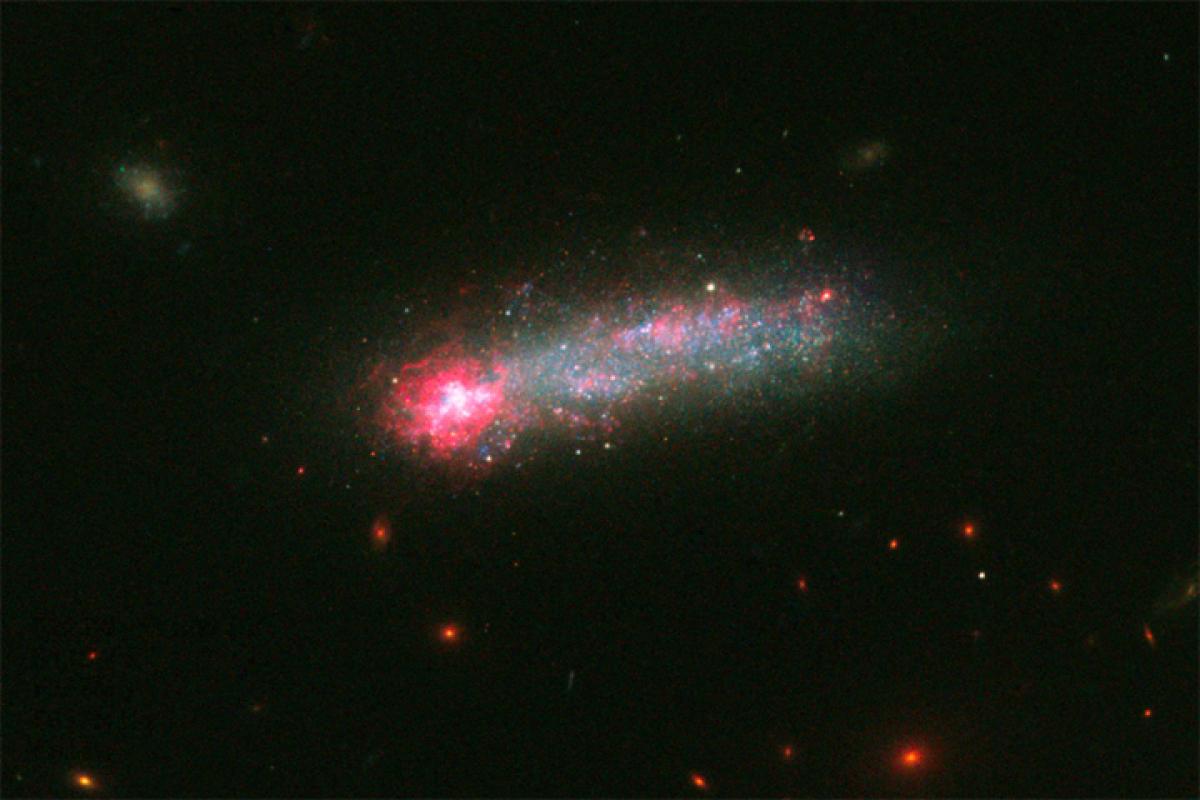Live
- Omar Abdullah Urges Congress To Earn INDIA Bloc Leadership Role
- Historic Temple In Sambhal Reopens After 46-Year Closure Following 1978 Riots
- Officials directed to work for deeper reach of guarantees
- Delay In 'One Nation, One Election' Bills Introduction Announced
- Exhilarating ‘Benchmark’ of Venkat Changavalli
- Development activities worth `30 cr launched in Puthalapattu constituency
- Allegations against KTR baseless: BRS leader
- Megastar Chiranjeevi to Visit Allu Arjun’s Residence at 12 PM Today
- Nilima Rane: Trailblazer in Nursing
- Casual yet stylish office outfits for all-day comfort
Just In

NASA’s Hubble Space Telescope has captured a spectacular fireworks display in a small, nearby galaxy, which resembles a skyrocket.A team of astronomers found that a firestorm of star birth is lighting up one end of the diminutive galaxy Kiso 5639.
NASA’s Hubble Space Telescope has captured a spectacular fireworks display in a small, nearby galaxy, which resembles a skyrocket.A team of astronomers found that a firestorm of star birth is lighting up one end of the diminutive galaxy Kiso 5639.
The dwarf galaxy is shaped like a flattened pancake, but because it is tilted edge-on, it resembles a skyrocket, with a brilliant blazing head and a long, star-studded tail.
Astronomers suggested that the frenzied star birth is sparked by intergalactic gas raining on one end of the galaxy as it drifts through space.
"I think Kiso 5639 is a beautiful, up-close example of what must have been common long ago,” said lead researcher Debra Elmegreen of Vassar College, in Poughkeepsie, New York.
"The current thinking is that galaxies in the early universe grow from accreting gas from the surrounding neighbourhood. It’s a stage that galaxies, including our Milky Way, must go through as they are growing up,” Elmegreen said.
Elmegreen used Hubble’s Wide Field Camera 3 to conduct a detailed imaging study of Kiso 5639. The images in different filters reveal information about an object by dissecting its light into its component colours.
Hubble’s crisp resolution helped Elmegreen and her team analyse the giant star-forming clumps in the galaxy and determine the masses and ages of the star clusters.
Hubble uncovered several dozen clusters of stars in the galaxy’s star-forming head, which spans 2,700 light-years across.
These clusters have an average age of less than one million years and masses that are three to six times larger than those in the rest of the galaxy.
Other star formation is taking place throughout the galaxy but on a much smaller scale.
"There is much more star formation going on in the head than what you would expect in such a tiny galaxy,” said team member Bruce Elmegreen of IBM’s Thomas J. Watson’s Research Center, in Yorktown Heights, New York.
The galaxy, located 82 million light-years away, has taken billions of years to develop because it has been drifting through an isolated “desert” in the universe, devoid of much gas.
What triggered the starburst in such a backwater galaxy?
Based on simulations by Daniel Ceverino of the Centre for Astronomy at Heidelberg University in Germany, and other team members, the observations suggest that less than one million years ago, Kiso 5639’s leading edge encountered a filament of gas.
The filament dropped a large clump of matter onto the galaxy, stoking the vigorous star birth.
The team's results have been accepted for publication in The Astrophysical Journal.

© 2024 Hyderabad Media House Limited/The Hans India. All rights reserved. Powered by hocalwire.com







